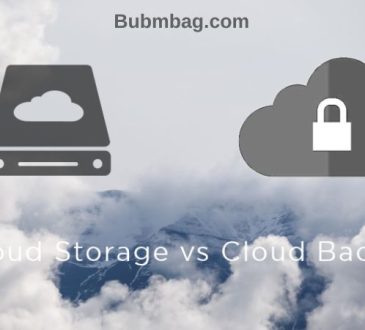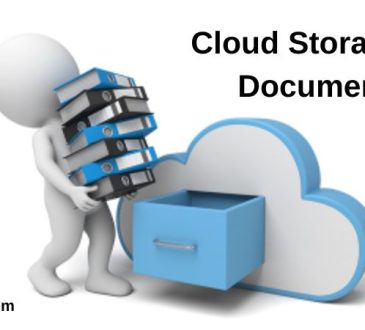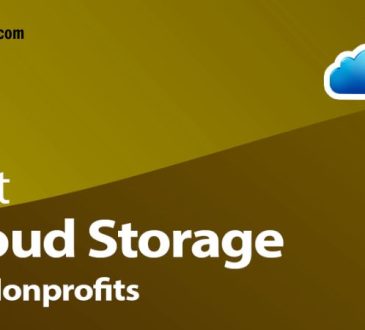
The two biggest data center trends today are cloud computing and big data. However, are there any similarities between these two data center trends? Let’s follow the article The Intersection Between Big Data With Cloud Computing.
Contents
What is Big Data?
Big Data is a term that appears a lot in the information technology industry today. Big data can be understood as simply as the name, Big Data is a term used to refer to a collection of data so large and so complex that traditional data processing tools and applications cannot be used. can afford.
However, Big Data contains a lot of valuable information that, if successfully extracted, will help a lot for business, scientific research, predicting upcoming epidemics, and even the whole world. real-time traffic conditions. Therefore, these data must be collected, organized, stored, searched, and shared in a different way than usual.
Because the data block is so large, the implementation of Big Data will face obstacles including data acquisition, data storage, search, sharing, transfer, and update…
Big Data or big data is a term for data that has three properties: large data, fast processing speed, and data diversity.
What is Cloud computing?
Cloud computing, also known as virtual server computing, provides technologies and computing resources linked to the Internet. With the cloud computing model, users will have access to resources from technology, computing power, and database storage from cloud service providers.
If you are using web applications from big companies like Google or Microsoft, you are using Cloud Computing yourself. Web applications such as Gmail, Google Calendar, Hotmail, SaleForce, Dropbox, and Google Docs are all based on Cloud Computing because when connecting to those services, users have access to massive clusters of unified servers. on the Internet.
Macro trends of big data
Just as the cloud has a macro trend behind it being a service-oriented approach, big data also has some macro trends.

The first trend is Consumption:
We consume data as part of our daily personal as well as work activities. From booking flights, and finding a partner, to diagnosing illnesses, data is driving more decisions than ever before. We live in an ever-changing social landscape where people want to make data-driven decisions.
The second trend is Equipment (Instrumentation):
We always collect data in each of our activities, and this is done in large part by machines, rather than by humans. From supply chains to Fitbits, we collect information about our activities for the purpose of measuring and analyzing them.
The third trend is Discovery:
The relatively simple access to this vast trove of data means we can practically use it to build, test, and conduct experiments that previously seemed impossible.
Finally, big data brings a new point in the relationship between us and data, and according to the specific idea in this article, that new point is seen compared to cloud technology.
Relationship between Cloud and Big data
There is a close relationship between cloud computing and Big data. Big data has its origin in cloud computing they complement and complete each other, although they were born almost simultaneously.
The ever-expanding cloud computing has also driven and driven the technological perfection of big data, by simplifying the way data is accessed, stored, and computed resources.
In other words, the foundation of cloud computing will complement the data processing, storage, and analysis of big data architecture, an application that is very popular today.
In addition, the combination of cloud computing and big data also affects many other factors besides life, cloud computing supports users to share a lot of data.
Diversity of users will also form habits and thoughts about how to use technology, and how we develop big data to improve the disadvantages of cloud computing.
Difference between Big Data and Cloud Computing
Although technically different terms, Big Data and Cloud Computing often appear side by side in many science and technology texts, because they interact synchronously.
Essentially, Big Data refers to the collection of data that is collected, while the term “Cloud” refers to a collection of high-powered servers from one of many providers.
They can often view and query large data sets much faster than a standard computer. In a nutshell, Cloud Computing is a mechanism to remotely retrieve data and perform any specified operations on that data.
Application of cloud computing and big data in business
We cannot deny the great role and benefits that cloud computing technology has brought. Currently, many businesses in all fields are using applications and services of cloud computing to store information and organize and manage work.

With an outstanding advantage in a huge data warehouse, which saves time, money, human resources, and work control plans, employees are all more effective. In addition, investment costs are much lower than the warranty and upgrade of previous physical management software.
Whereas, big data uses large datasets from new sources. For many manufacturers, this is also an indispensable technology for processing big data.
Thus, it can be seen that these are all important technologies used to develop today’s society, and are great achievements of science for people to constantly move, and change their lives more modern.
Big Data and Cloud Computing: the perfect combination
As is known, it is fully possible to integrate big data and cloud computing. If it exists alone, the huge potential of Big Data will not be fully exploited. Moreover, using a computer simply to analyze huge data files is a seemingly impossible task.
However, Cloud Computing allows us to use the most advanced infrastructure, as well as save and optimize resources and costs for data analysis. On the other hand, big data is also the driving force behind the development of computing applications.
Without big data, the number of cloud computing applications would certainly be far less than it is today. It should also be noted that these applications are also considered to be important sources for the explosion of big data.
In short, cloud computing services largely survive on big data. Similarly, the only reason we can harness the potential of big data is because of the existence of services capable of capturing and decoding data in seconds.
Therefore, it can be said that the two concepts of big data and cloud computing make a perfect, inseparable combination.
Big data and cloud computing are both indispensable factors in a digital society. Both links, integrated with each other, allowing individuals and organizations with great ideas but limited resources, to get closer to the opportunity to succeed in business.



